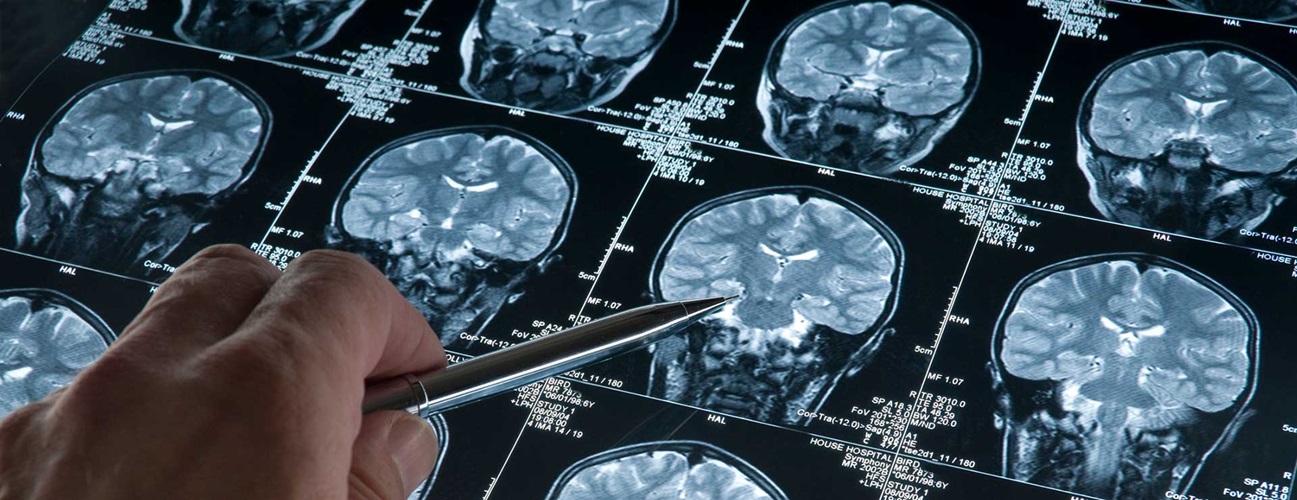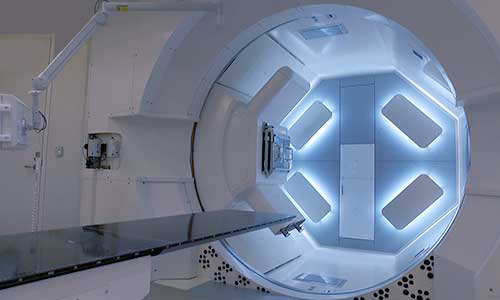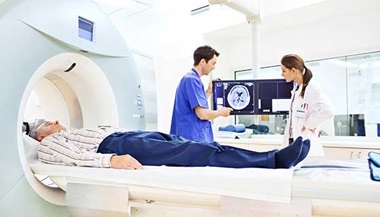Skull Base Tumors
What You Need to Know
- The skull base consists of several bones that form the bottom of the head and the bony ridge behind the eyes and nose.
- Many different kinds of tumors can grow in this area. They are more likely to cause symptoms and be diagnosed when they grow large enough to put pressure on the brain.
- Treating skull base tumors is challenging because they can grow deep within the skull and close to critical nerves and blood vessels in the brain, head, neck and spinal cord.
What are the different types of skull base tumor?
Skull base tumors most often grow inside the skull but occasionally form on the outside. They can originate in the skull base as a primary tumor or spread there from a cancer elsewhere in the body as a metastatic brain tumor.
Skull base tumors are classified by tumor type and location within the skull base.
In the front section of the skull base (anterior cranial fossa), which contains the eye sockets and sinuses, the following tumors are more likely:
The central compartment of the skull base (middle cranial fossa) contains the sella turcica, a saddle-shaped bony structure in the skull base where the pituitary gland is located. Tumors arising in this area are called sellar tumors, and may include:
At the back compartment of the skull base (posterior cranial fossa), the following tumors are more common:
-
Epidermoid tumor
Other Skull Base Tumors
Chondroma
Chondromas are very rare benign tumors made of bone cartilage found in the skull. Both the skull base and the paranasal sinuses contain cartilage. Chondromas can develop in this cartilage, typically in people between the ages of 10 and 30.
These tumors grow slowly, but eventually may cause the bone to fracture or grow too much, creating pressure on the brain. In rare instances, chondromas may develop into a cancerous condition called chondrosarcomas.
Though each individual may experience symptoms differently, when a chondroma develops, it may cause visual changes or headache.
Diagnosing a chondroma may include imaging studies such as X-ray, CT scan or MRI to determine the size and location of the tumor.
Encephaloceles
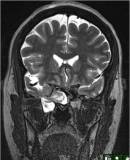
Encephaloceles are sac-like protrusions of part of the brain and meninges through openings in the skull. These rare birth defects occur when the neural tube, in which the brain and spinal cord form, fails to close completely during fetal development. Skin or, less often, a thin membrane, covers the sac outside the skull.
Encephaloceles can occur in the base of the skull, the top or back of the skull, or between the forehead and nose. Conditions associated with encephaloceles include hydrocephalus (excess accumulation of cerebrospinal fluid in the brain), developmental delays, microcephaly (an abnormally small head), paralysis and seizures.
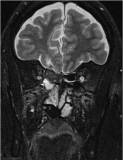
When an encephalocele occurs, it may cause any or all of the following symptoms:
-
Headache
-
Nasal drainage
-
Meningitis
-
Visual disturbances
-
Tinnitus
Diagnosing encephaloceles includes an analysis of the nasal fluid for a protein called beta-2 transferrin which is most only found in cerebrospinal fluid. CT and MRI scans may also be require to determine the location and severity of the leakage.
Hemangiopericytoma
Hemangiopericytomas are rare tumors that involve the blood vessels. They are most common in the legs, pelvic area, head, neck and brain. Hemangiopericytomas often are painless masses with few or no symptoms.
Most hemangiopericytomas are found in soft tissues but may occur in the skull base, nasal cavity and paranasal sinuses. These tumors may be benign or malignant; cancerous hemangiopericytomas can spread to the bone, lungs or liver.
In addition to a complete medical history and physical examination, diagnostic procedures for hemangiopericytomas may include X-ray, CT scan or MRI to determine the size and location of the tumor.
Hemangiopericytoma treatment involves surgery, involving either a craniotomy or an endonasal endoscopic procedure. The surgeon may recommend treatment with radiation or chemotherapy after surgery to increase the chances of a good outcome.
Skull Base Nasopharyngeal Angiofibroma
Nasopharyngeal angiofibroma, also known as juvenile nasopharyngeal angiofibroma, is a benign tumor in the nose usually found in adolescent boys.
Nasopharyngeal angiofibromas spread into areas around the nose, causing symptoms such as a stuffy nose and bleeding from the nose.
Skull Base Osteoma
Osteomas are benign bony outgrowths (new bone growth) mostly found on the skull and facial bones. If the bone tumor grows on another bone, it is called homoplastic osteoma. If it grows on tissue, it is called eteroplastic osteoma.
Skull base osteomas are slow growing and generally cause no symptoms. However, large osteomas in some locations may cause problems with breathing, vision or hearing.
Petrous Apex Lesions
Petrous apex lesions are abnormalities that occur in the tip of the bone in the skull next to the middle ear. The most common type of petrous apex lesion is benign cholesterol granulomas, which are cysts. Other petrous apex lesions include cholesteatomas, petrous apicitis, petrous apex effusion, and bone cancer.
Most petrous apex lesions are benign. However, patients with other types of cancer may develop metastatic petrous apex lesions, which are malignant tumors that originate as cancer elsewhere in the body and then spread to the brain.
